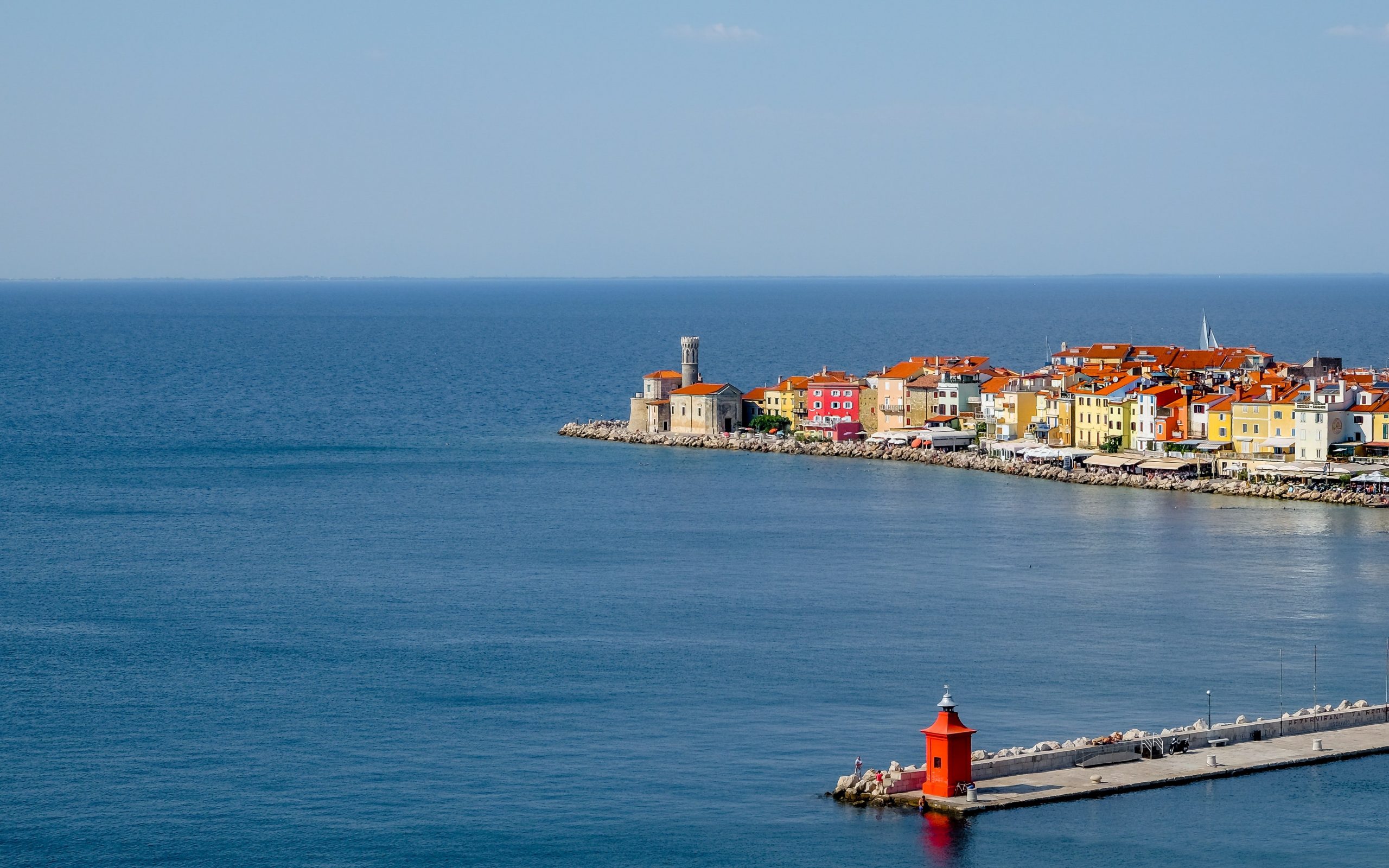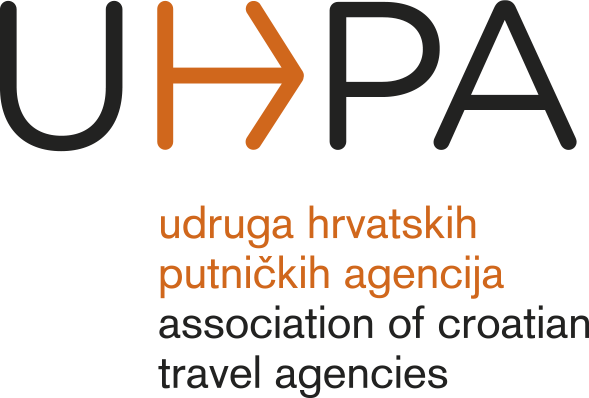Summer
Where the sun meets the sea
summer in croatia and slovenia
Long hot days, warm sea, and many activities – that’s summer in Croatia. As a destination, this small but geographically diverse country has a lot to offer: from sailing through the Adriatic and visiting numerous islands to scuba diving among shipwrecks or climbing steep cliffs. Everyone who enjoys the slow tempo can relax on numerous natural beaches, take a walk through lively old towns, and have a top-notch meal in one of the restaurants with authentic local food. Follow us through the text and get some ideas about where to go and what to visit for your unforgettable summer holidays in Croatia.
Great walking tours
A walk through Hvar lavender fields
What is the essence of the Mediterranean? Imagine purple lavender fields surrounded by green pine trees, rosemary bushes, and a clear blue sky while you can feel the sea breeze. This is an island on Hvar with lavender fields in bloom. The story of the famous Hvar lavender fields started in 1928 in the small village of Velo Grablje, where one man planted his first seedlings. Although a peculiar decision at the beginning, other villagers followed his vision and started planting lavender as well. Very soon, Hvar became one of the biggest producers of lavender oil in Europe. Organic production and hand-picking distinguish its lavender from others. If you want to learn more, the best is to join some of the organized tours through the fields and enjoy the stories of this incredible island.
Game of Thrones Tour
Game of Thrones is a fantasy adventure television series that has thousands of fans all around the world. When HBO started to film the series, few expected that small Croatia would be on its filming list, but it was, and the rest is history. Croatia’s natural beauty and stunning well-preserved old towns were used as filming locations transforming their scenery into an imaginary landscape. That’s how Daenery’s slave liberation happened through the streets of the Split, while Dubrovnik is King’s Landing. There are many filming locations, so the easiest is to join some of the interactive tours. That’s how you can be sure that you didn’t miss anything from the filming of your favorite TV show”. In addition: The Game of Thrones prequel named “House of the Dragon” is also filmed in Croatia, anticipating that all true fans will have many more new locations to explore.
Discovering Tito`s secret tunnels
For many years the island of Vis was a military base of the Yugoslav army, making it forbidden for all foreign visitors, especially tourists, until 1990. During the Second World War, Vis was the partisan base for coordinating military operations. It was also a military airbase of the Allied forces, the remains of which are still visible throughout the island. Abandoned warehouses, nuclear bunkers, a former missile base, and bomb-proof submarine shelters are just some of the impressive abandoned military facilities scattered around the island. The most mysterious is probably kilometers of underground tunnels made to protect Tito in the case of the Cold war attack. If you like an active vacation and you are a history buff, a military tour is something that might fit your size just right.
Discovering the walls of Ston
Little is known that the longest preserved fortification system after the Great Wall of China is the Walls of Ston. Ston is a small municipality with the same name settlement, situated at the beginning of the Peljesac peninsula in the vicinity of Dubrovnik. In the 14th century, the Ston became a part of Dubrovnik’s Republic. The Republic started to build a defensive wall around Ston to defend the whole area from hostile intruders. Originally 7 kilometers long, the Walls connected Ston and Mali Ston with their precious salt works. Today the majority of the walls can be walked around, and the salt work called Solana still works. Solana was founded in 1333, and it is considered to be the oldest one in Europe. Using in the production only the sun, the sea, the wind, and human strength, it gives limited amounts of exceptionally high-quality salt flowers.

Activities
Climbing
If you are a passionate climber who always looks for new challenges, pack your backpack because Croatia is your new destination. The whole country can be divided into a few climbing regions, including Istria and Kvarner on the north and Dalmatia with islands on the south. What they all have in common is outstanding limestone, a lot of new areas, and climbing-wise routes. Croatia’s full climbing potential is just starting to get recognized.
Sailing & island hopping
Sailing in Croatia is a wonderful way to discover this country of a thousand islands. Numerous companies are offering to charter a sailboat with a skipper and arrange all the wanting details. Pre-season for this activity already starts in April, with its peak during June, July, and August, and finishing in mid-October. During the summer months, there are plenty of sunny hours, the sea is warm, and the currents are calm, making this a perfect time for sailing. If you still think about why to charter a boat, let’s just say that it allows you to visit hidden coves, small islands, and beautiful bays not reachable without a boat. Sailing gives you an opportunity to tailor island hopping at your own pace. If you are going to visit Croatia for the first time and need a recommendation, mark in your sailing map the Geopark Vis archipelago, which covers the area around the island of Vis and its belonging islets. Because of its natural charm, Geopark is described as one of the last paradise oases of the Mediterranean.
Parasailing
Summer is a synonym for leisure activities, and parasailing is one of the most popular ones. As a combination of parachuting, paragliding, and sailing, it is a great way to enjoy spectacular panoramic views without prior experience. It can be done solo or with company, and the parachute can go up to 600 meters in the sky. Parasailing can be tried on numerous beaches along the coast and the islands, including Kvarner Bay, Split, and Makarska Rivier, as some of the most popular destinations for this activity.
Windsurfing
Popular destinations among windsurfers are in the region of Istria. There are several windsurfing centers placed in Pomeran, Medulin, Fazana, and Rovinj where you can rent equipment and enroll in a windsurfing course. Courses go from beginners to advanced ones, so you don’t need any prior skills if you want to join this adrenaline adventure. The clear blue sea, neat pebbled beaches, and colorful sunsets make Istria not to be missed for the windsurfing in the Adriatic Sea.
Swimming and (naked) sunbathing
Swimming and sunbathing are probably other names for the summer holidays. With a clear warm sea and a lot of blue flag beaches, Croatia is a favorite swimming and sunbathing destination. The best is that along the Adriatic coast, you can still easily find a hidden part of a beach or a small cliff only for yourself. That’s why all you sometimes need for a beach are a towel and a book. It is important to know that topless sunbathing is acceptable on all the beaches in Croatia. If you want to swim or sunbathe naked, that is possible on almost every secluded beach or some of those officially marked as FKK. Shortened from the Greman phrase frei-körper-kultur, FKK means free body culture. Croatia has plenty of nudist camps, naturist beaches, with Bunculuka beach on the island of Krk as probably one of the most famous ones.
Snorkeling and diving
The Adriatic Sea is one of the cleanest in the world. Thanks to its transparency, clear visibility, and vivid underwater world, snorkeling equipment is a must-have when you go to the beach. If you look right, there is also a good possibility that you will find some shells. In its depths, Adriatic is hiding many secrets. Sunken warships, underwater caves, and coral fields bursting with life are some of the reasons why divers from all over the world come to Croatia every year. If you are new to this and would love to learn more, there are many PADI-certified scuba diving centers on the coast as well as on the islands like Krk, Hvar, Korcula (Vela Luka), and Vis (Komiza). According to the experience of the divers, many agree that the best choice for scuba diving is Dubrovnik.
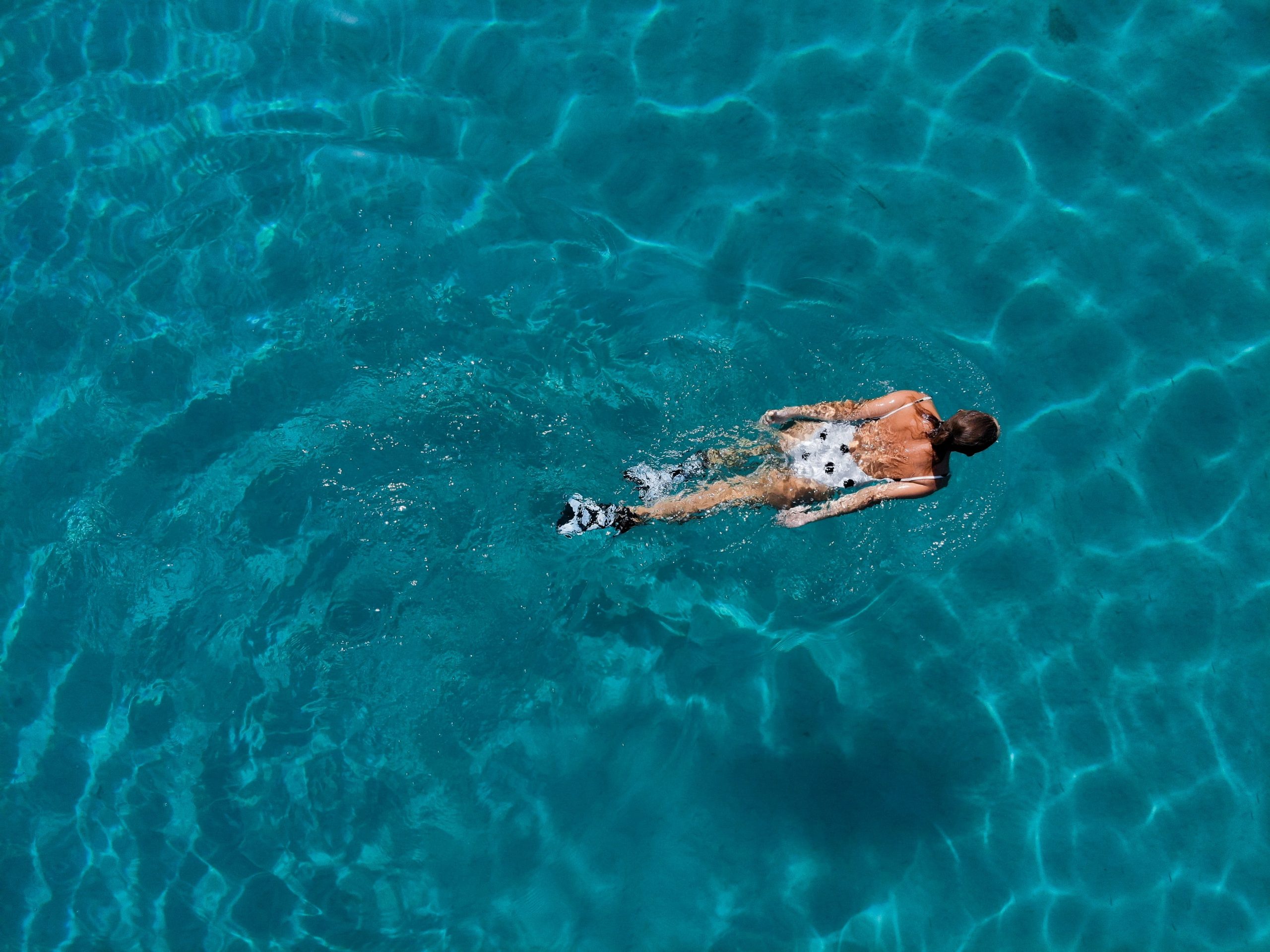
Beautiful nature
Zlatni rat
The small town of Bol on the southern side of the island of Brac is home to probably the most famous Croatian beach, Zlatni rat, translated as Golden Horn or Golden Cape. This pebbled beach can be found on many tourist prospects making it one of the most recognizable symbols of summer in Croatia. Although it is 1000 meters long, it often changes its shape. As the wind blows, it rearranges the pebbles, giving the very top a different and slightly curved look. There is a nicely landscaped promenade that takes you from the center of Bol to the beach in just 15 minutes.
Blue Cave
Blue cave is an absolute must-see on your ultimate summer what-to-do list on vacation in Croatia. Situated on the eastern side of the small island of Bisevo, this cave was a mystery to the public until the late 19th century, when the external entrance was breached. The only way to get into the cave is by a small rowing boat through a hole large enough to enter it but not to illuminate the cave. However, inside the cave, you are not in the dark. Light reaches through an underwater opening, reflected from the seabed, illuminating the cave with a beautiful blue color that is hard to forget. During the summer season, there are plenty of tourist agencies offering daily trips to this destination, along with visiting a couple of more islands on the way, making it a favored getaway.
Green Cave
If you decide to visit the Blue cave, you might want to add to your list a visit to the Green cave as well. Since 1967, the Green Cave has been a protected geomorphological monument of nature located within the Vis archipelago. Hidden among the cliffs of the small and uninhabited island of Ravnik, Green cave is located some 45 minutes away from Blue cave. The Green cave has two openings. Through the one at the top, light penetrates like a reflector, illuminating the seabed and creating beautiful shimmering effects. The famous green color of the cave comes from the green glare due to the algae multitude.
Blue lagoon
Although Dalmatia has a couple of beaches called this name, there is only one true Blue Lagoon, and it is the one that belongs to Budihovac island. On one side, this small island has a pebble beach, while on the other, it borders Mali Budihovac, forming in between a lagoon beloved among sailing yachts. Dazzled by its crystal clear turquoise sea and white pebbles, most first-time visitors describe Budihovac as a paradise. Some time ago island got its only inhabitant who lives there most of the year, running a small restaurant during the season. Taking all into consideration, Budihovac is favorable for a half-day trip, enjoying the sun and sea, and finishing everything up with a local gourmet experience in the only restaurant on the island.
Arboretum Trsteno
Fifteen kilometers northwest of Dubrovnik is the small town of Trsteno. Throughout history, rich citizens of Dubrovnik used to build here their summer houses with astonishing gardens. The Arboretum Trsteno was founded 500 years ago on the property of the noble family Gucetic – Gozze. It covers approximately 25 hectares and is home to diverse plants from all over the world: from autochthonic species to palm trees, eucalyptus, and oriental plane. Today Arboretum Trsteno is the oldest botanical garden and the only arboretum in the Mediterranean part of Croatia. In the last couple of years, this place has been visited by many fans of the popular Game of Thrones series. Namely, its beautiful greenish scenery served as a setting for the Red Keep palace gardens in King’s Landing.
Mljet National Park
There is a legend saying that this southern Croatian island is Homer’s magical Ogygia: a place with luxuriant wood and sweet-smelling cypresses where Greek hero Odysseus has spent seven years of his life in the arms of the seductive nymph Calypso. Is it a truth or just a legend? We can’t say, but Mljet really does have lavish vegetation, making one-third of the island a national park. In addition to the rich forest, Mljet owes its protected status to its unique panoramic appearance, numerous cliffs, rich cultural heritage, as well as Small and Big lakes that emphasize the beauty of the island. In the middle of the Big Lake, there is a small islet with the church of St. Mary, a location not to be missed. Without any further doubts, Mljet is one of the most beautiful Croatian islands.
Croatia has eight national parks
Besides Mljet, there are Plitvice Lakes, Brijuni islands, Risnjak, Nothern Velebit, Paklenica, Kornati, and Krka. Plitvice Lakes are the oldest, the largest, and probably the most famous. Their exceptional natural beauty lies in the system of 16 lakes cascading one into another, making a beautiful waterfall that you can visit while walking on a small wooden path around them.
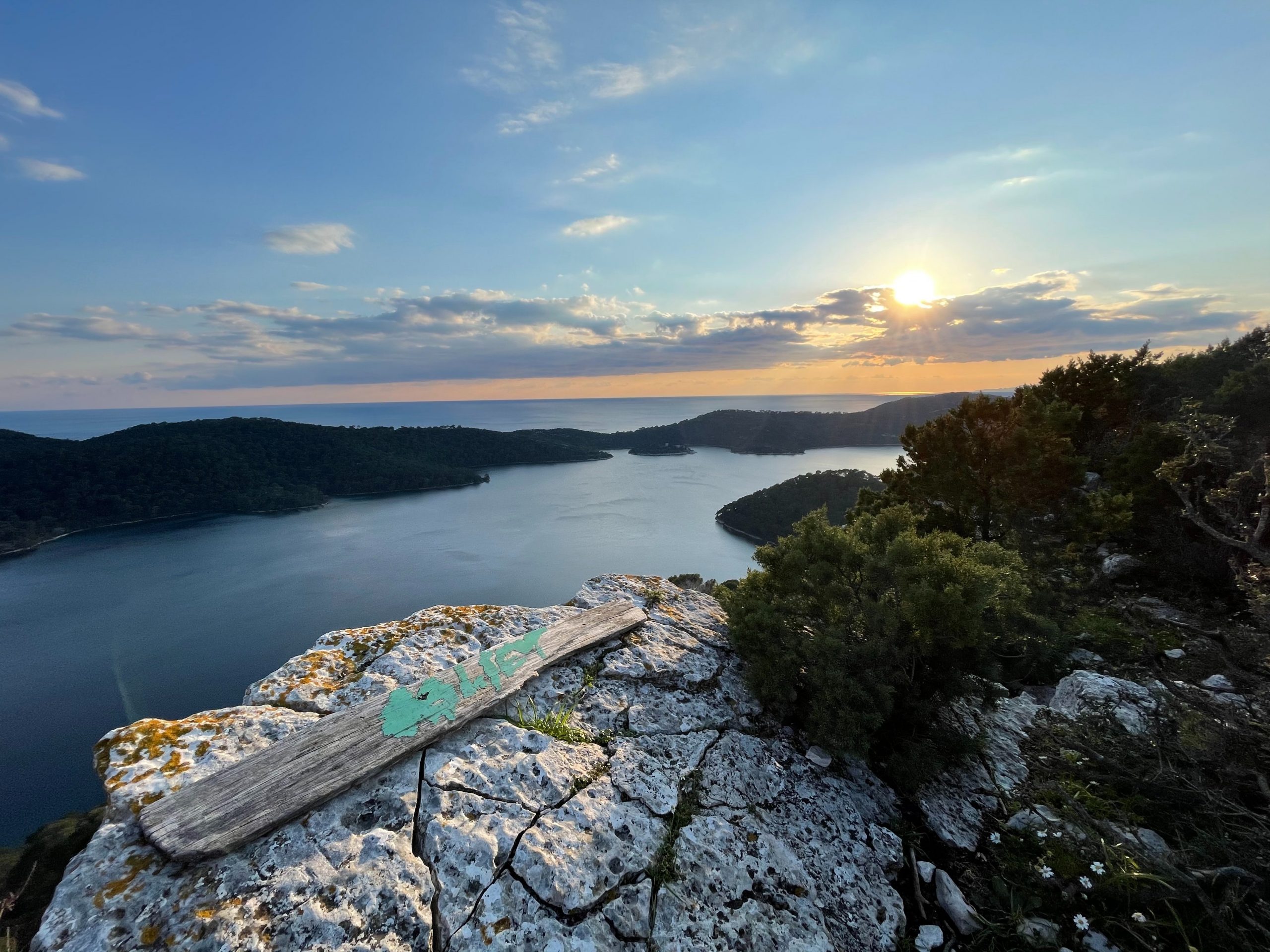
Festivals and cultural events
Dubrovnik Summer Festival
This is the oldest cultural and artistic festival in Croatia and also one of the most prestigious ones. It brings together some of the most prominent music, ballet, folklore, drama, and visual artists from around the world. The festival takes place in the open, surrounded by the unique ambient of the Renaissance-Baroque buildings of this historic city, which gives it a special atmosphere. During the Summer Festival, Dubrovnik becomes a place of valuable artistic performances exchanging new artistic ideas and promoting the city as a world cultural center.
Cest is d’best
Every summer, the streets and squares of the capital city of Zagreb get captured by bright colors and optimism. This can be thanks to Cest is d’best – international, multimedia, and the oldest street festival in Croatia. The festival gathers numerous domestic and foreign music, visual, and stage artists to briefly revive the city center through street performing, dancing, and art installations. Various program is adapted for visitors of all ages, with art workshops, circus performances, theater, and puppet shows specially organized only for children. If you find yourself in Zagreb during Cest is d’best, make sure to check out why it is the best street festival in Croatia.
Motovun Film Festival
Motovun is an incredibly picturesque small medieval town situated as a fort on top of a hummock in the region of Istria. For over two decades, it has hosted the Motovun film festival – one of the most famous film festivals in Southeastern Europe. This festival is essential among movie connoisseurs and is dedicated to independent production and short films from around the world. Attending an open-air film festival surrounded by the old streets of Motovun is a unique experience.
Spancirfest Varazdin
Varazdin is located in the northwest of Croatia, about an hour and a half drive from Zagreb. This city of harmonious architecture, lovely squares, and parks becomes every year a host of a vivid festival called Spancirfest. Concerts, street performances, creative workshops, children’s activities, plays, and exhibitions, are just part of its rich program. Adding to it a positive atmosphere and the streets of Varazdin bursting with life, Spancirfest is the right way to celebrate the end of summer.
Alka tournament
Alka is a unique knight tournament in which alkar (the knight) has to pearce an alka ring with his spear while riding the horse. It is held every year in August in memory of the glorious battle of 1715 when the citizens of Sinj resisted the Ottoman conqueror and preserved the city. This competition is dedicated to Our Lady of Sinj, which citizens believe saved Sinj from a far more numerous and superior enemy. Although many knightly games around Europe became forgotten, alka preserved its 300 years old legacy. Protected by UNESCO as a world intangible heritage alka today represents a symbol of hope, faith, and peace, but also a tradition that pays homage to the customs of ancestors. To win in this tournament is a special honor, and only those born in the region of Sinj can compete.
Days of Diocletian
If you had ever wondered how it was to live in Split when Roman Emperor Diocletian ruled from his palace, the Days of Diocletian might be just the right thing to put on your to-do list. During this manifestation, visitors might think that they got into the time machine: togas and tunics, Diocletian and his wife greeting the visitors into the palace, the Carriage Parade, ancient Roman football, and much more. There is also an opportunity for wine tasting and to buy Roman crafts, bringing you a piece of the atmosphere from the days when the Split was the center of the world.
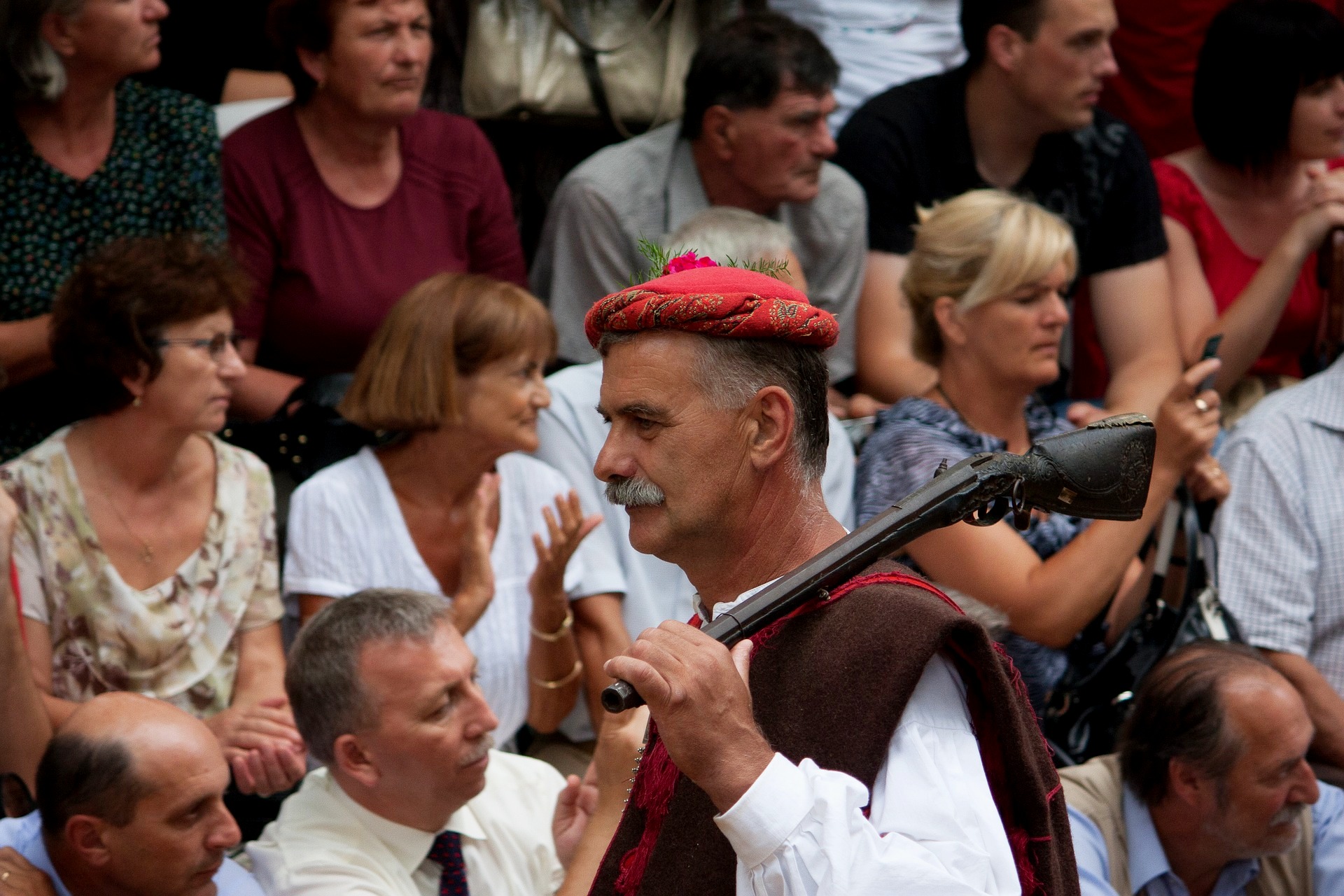
Best nightlife in Croatia
IN music
INmusic is the biggest Croatian open-air festival. It takes place every June in Zagreb, on the South Island, surrounded by greenish scenery and Jarun Lake. Although it is mostly a rock festival, three big stages and several smaller ones host performers from different genres like pop, punk, ska, world music, and others. For two years in a row, CNN listed INmusic among the 50 best festivals in the world.
Zrce beach
The Zrce beach on Pag island is one of the best party beaches in the world. Often referred to as Croatian Ibiza, the beach has several groovy clubs that, in the summer season, host some of the biggest EDM DJs in the world. If you are looking for fun and late-night parties, this is one of the best party destinations in Croatia.
Ultra Europe
Two and a half hour’s drive south from Pag will bring you to Split, the largest city in Dalmatia. Split is the home of Ultra Europe – one of the greatest outdoor festivals with electronic music. The event lasts for a couple of days, and it brings together people from all around the world who came to share their love for music. In the days of Ultra Europe, it feels like the whole city of Split is overwhelmed with excitement and good vibes.

Must-see coastal cities
When summer starts, all roads lead to the coast. We will mention some of the cities and smaller towns that should not be missed here. They all have a perfect balance of sightseeing attractions, outdoor activities, nightlife, and, most importantly, public beaches. Starting from the northwest, the first is Rovinj in the region of Istria. This town has some of the most beautiful beaches in Istria, like Amarin – a blue flag beach suitable for the whole family. The old town of Rovinj has lovely narrow lanes for long relaxing walks. Close to Rovinj is Pula – a city with one of the best-preserved Roman Amphitheaters in the world and numerous other Roman remains that are incorporated within the modern city.
Southern from Istria is the region of Dalmatia. The biggest city in its northern part is Zadar. This is the hometown of many Croatian basketball players, with the old city placed on a small peninsula. Its cobbled streets reveal Roman remains and medieval churches, bringing you to a promenade with unique art installations named the Sea Organs and the Sun Salutation. Southern from Zadar is Trogir. Just like Zadar, Trogir’s old town is also situated on a peninsula. Its beautiful Gothic-Romanesque core is protected by UNESCO. During the Game of Thrones filming in Croatia, it was turned into the trading port Qarth.
Less than one hour drive from Trogir brings us to Split – a city where 1700 years ago, the Roman Emperor Diocletian chose to spend the last years of his life. Split has it all: it was built around the Diocletian’s imperial palace (which is, by the way, excellently preserved and still inhabited), but it is also a host of one of the biggest summer EDM festivals, and it has dozen of beaches for leisure. If you are looking for a quieter vacation, Split is your destination as well: an archeological museum with impressive exponents, art galleries, fine dining restaurants, and a lot of interesting spots for a daily trip. Once you visit it, you will probably come back.
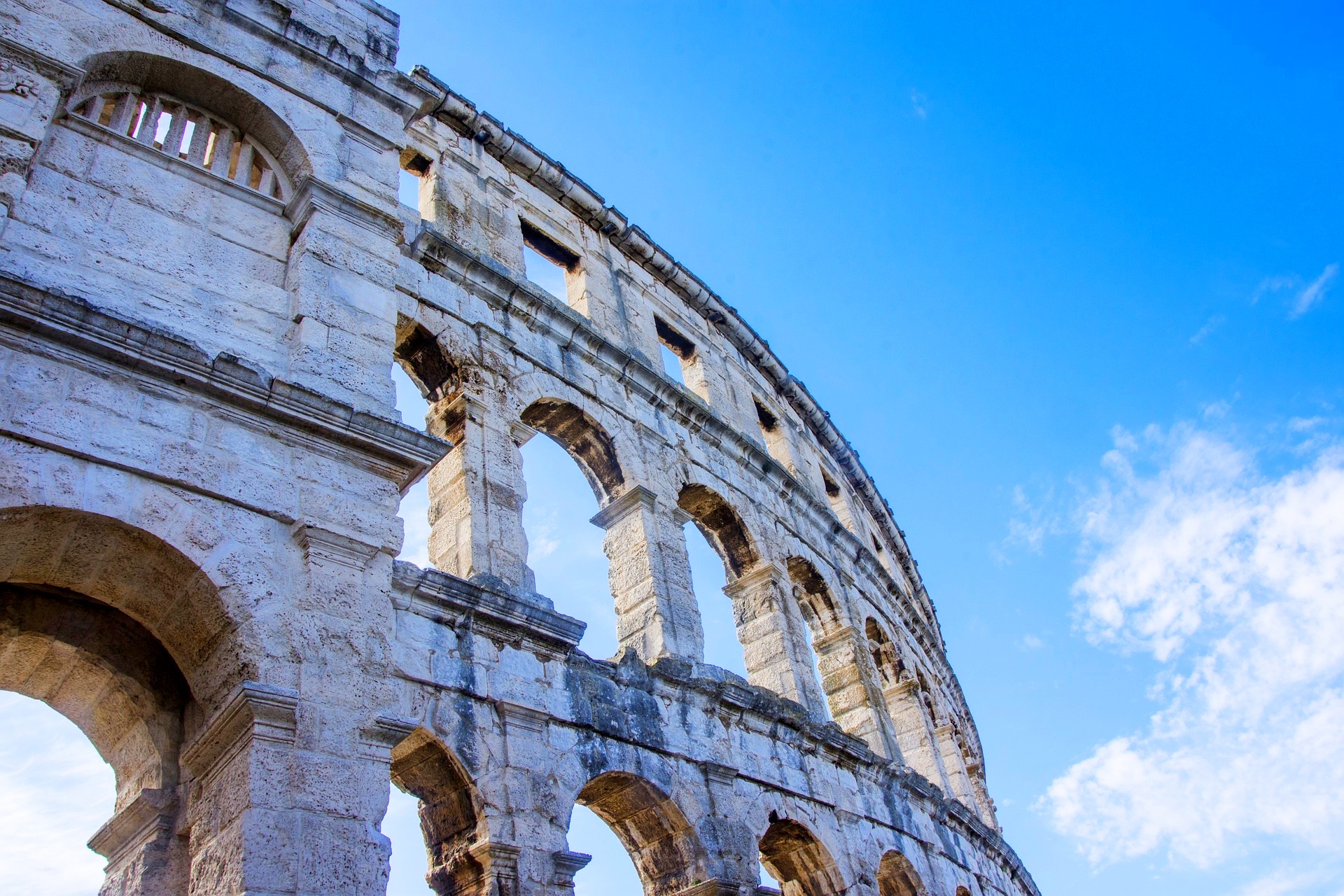
Best Croatian islands
Croatia has one of the most rugged coastlines in Europe. Altogether, it counts more than 1200 islands, islets, rocks, and reefs. Many of them are great, secluded, and still undiscovered destinations that you can explore one after another, year after year. Of that large number, only 47 islands are inhabited, meaning that at least one person resides during the year. Croatian islands are amazing. Most of them are authentic destinations that offer a mixture of natural beauty and historical sightseeing while you are surrounded by locals living their everyday life.
Rab on the northern coast is a great start for exploring the islands. Recognizable by the four church towers that rise high above the red terracotta roofs, Rab is a lovely town with nice beaches. In the last week of July, Rab is a host of a Rapska fjera: a festival with a historical reenactment of the island’s life held on the streets of the old town. South of Rab is Dugi Otok. Known for sheer cliffs and stunning beaches, where you will find Sakuran – one of the most famous Croatian sandy beaches. The south-eastern quarter of the island is declared a Nature Park Telascica: one of the most stunning bays of the Adriatic.
Hvar island is one of the most famous Croatian islands. Besides its rich cultural heritage, it is a party destination where A-list celebrities come to have fun. On the other hand, neighboring Brač is a popular family destination and the home of one of the most recognizable Croatian beaches: The Golden horn. Further south, the seaway takes us to the island of Korcula – a legendary hometown of Marco Polo. Often called small Dubrovnik, the old town of Korcula won’t leave you indifferent. Besides Korcula, the Dubrovnik region has two still pretty unknown gems: Lastovo and Mljet. Lastovo is famous for Venetian architecture, botanical diversity, and its archipelago, which has been proclaimed a nature park. On the other hand, one-third of Mljet is a national park, emphasizing the beauty of the southern islands.
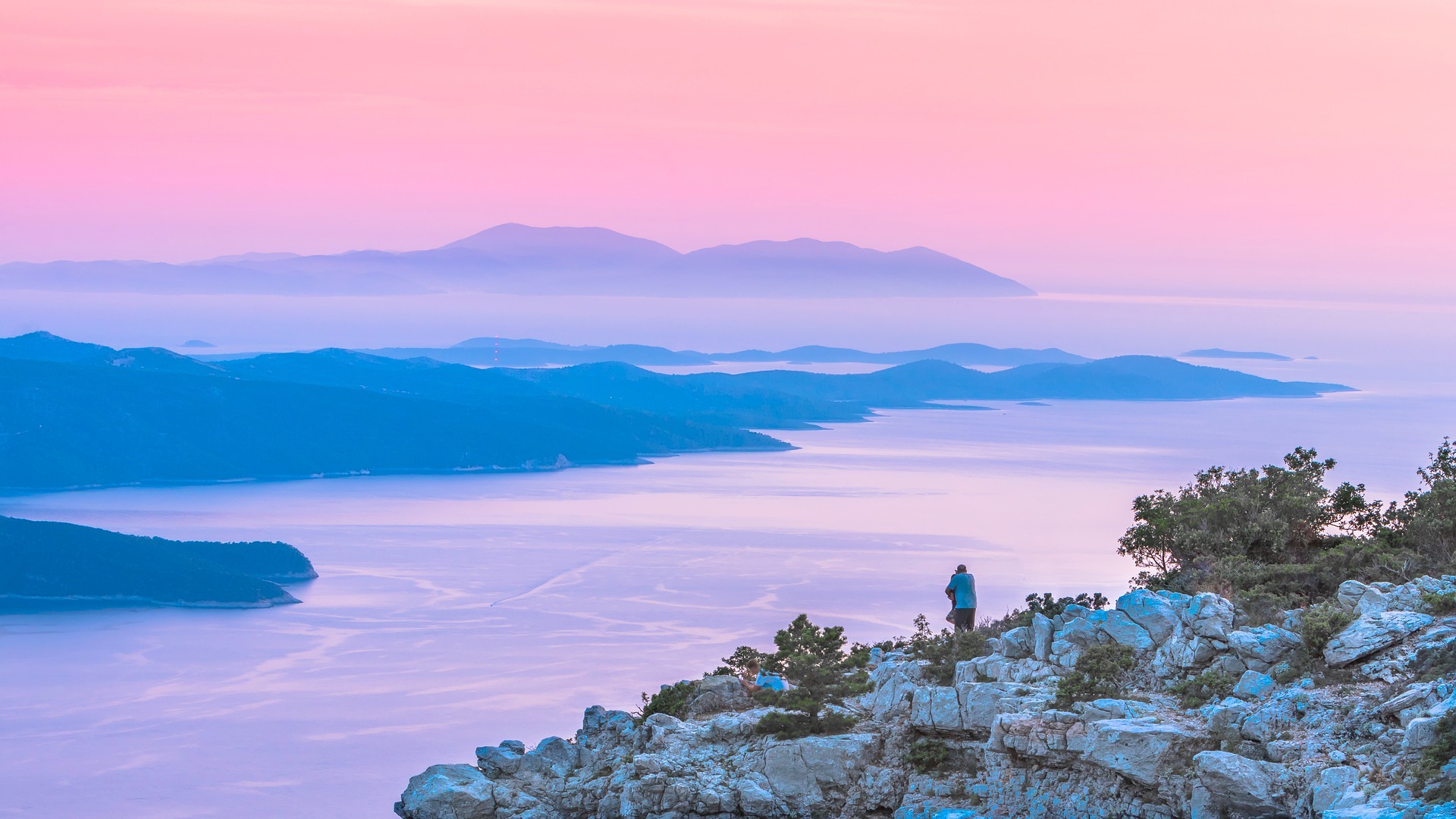
Visit Slovenia – the best of
Ljubljana
Ljubljana is Slovenia’s charming and vibrant capital city. You can get to know the old core by passing along its famous bridges and central market and finishing the walking tour by visiting the hilltop castle. The soul of the city is the Ljubljanica river – Ljubljana’s most recognizable landmark. Along the river, there is a promenade with café bars and restaurants offering outdoor seating great for leisure. If you want a different perspective of the town, we recommend the boat trip through Ljubljanica.
Town of Piran
Although it belongs to Central Europe, Slovenia also has a piece of the Adriatic sea only for itself. The town of Piran is considered to be its most beautiful coastal city, often called the beauty of Mediterranean Slovenia. Surrounded by the sea and the view of the Alps, this medieval town is well known for its salt pans with the world-class flower of salt.
Lipica – a home of Lipizzaner
Only 45 minute’s drive northern from Piran takes you to Lipica – the cradle of the stunning white Lipizzaner horses. Their stud farm has over 400 years of an unbroken tradition of breeding these noble animals. At the estate, visitors can tour the barn, visit the museum, walk through the parks and learn more about Lipica and the region.
Postojna Cave and Predjama Castle
If you are more interested in natural wonders than sightseeing, we recommend you visit Postojna Cave. One hundred forty years old railway will take you through the underground maze of corridors, halls, and tunnels so you can see firsthand why this karst phenomenon is considered a world-class attraction. Close to the cave is Predjama Castle. For more than 800 years, it has looked like a white dime inside the mouth of the cave complex. This largest cave castle in the world has many mysteries, among which are hidden cave entrances.
